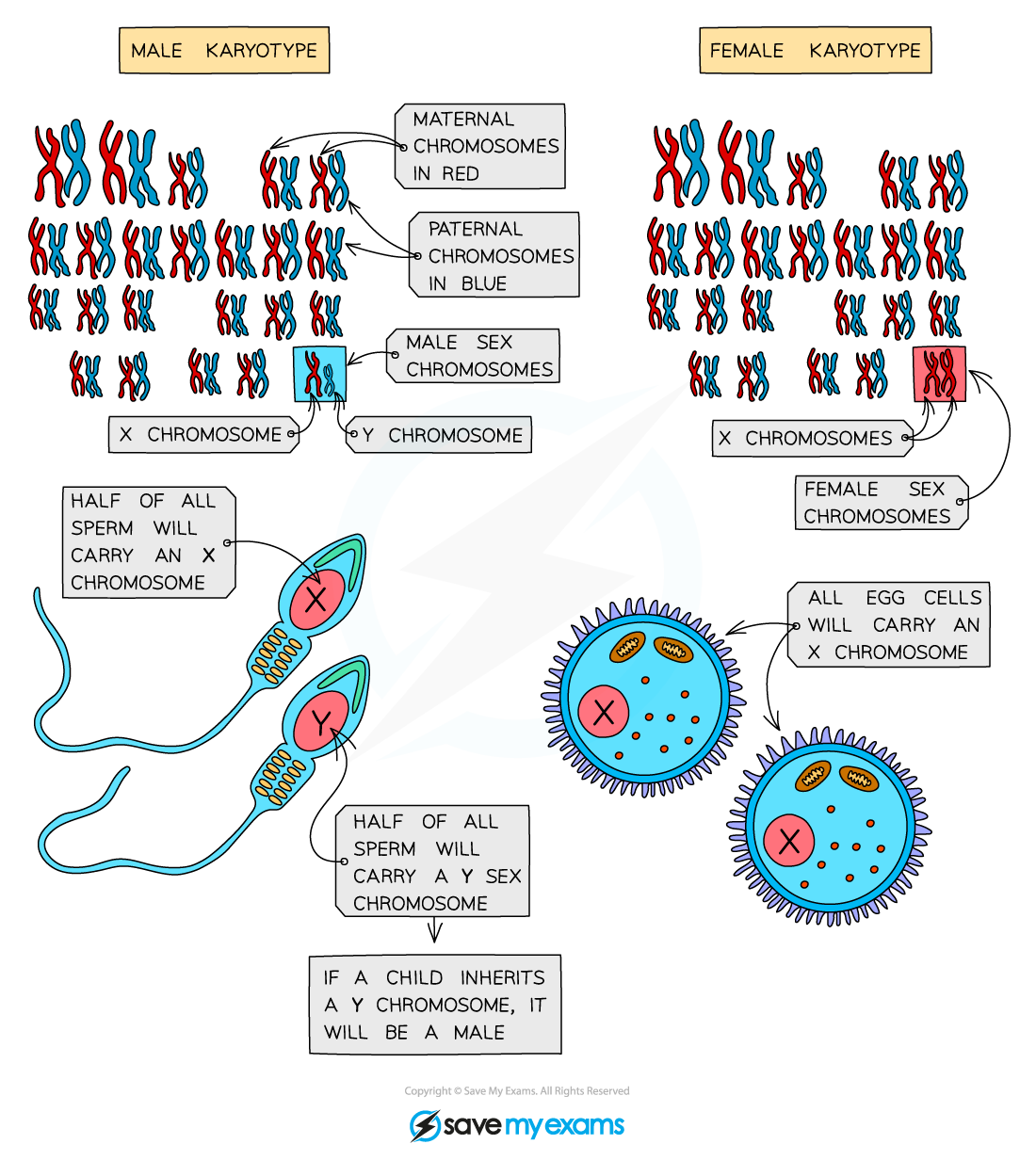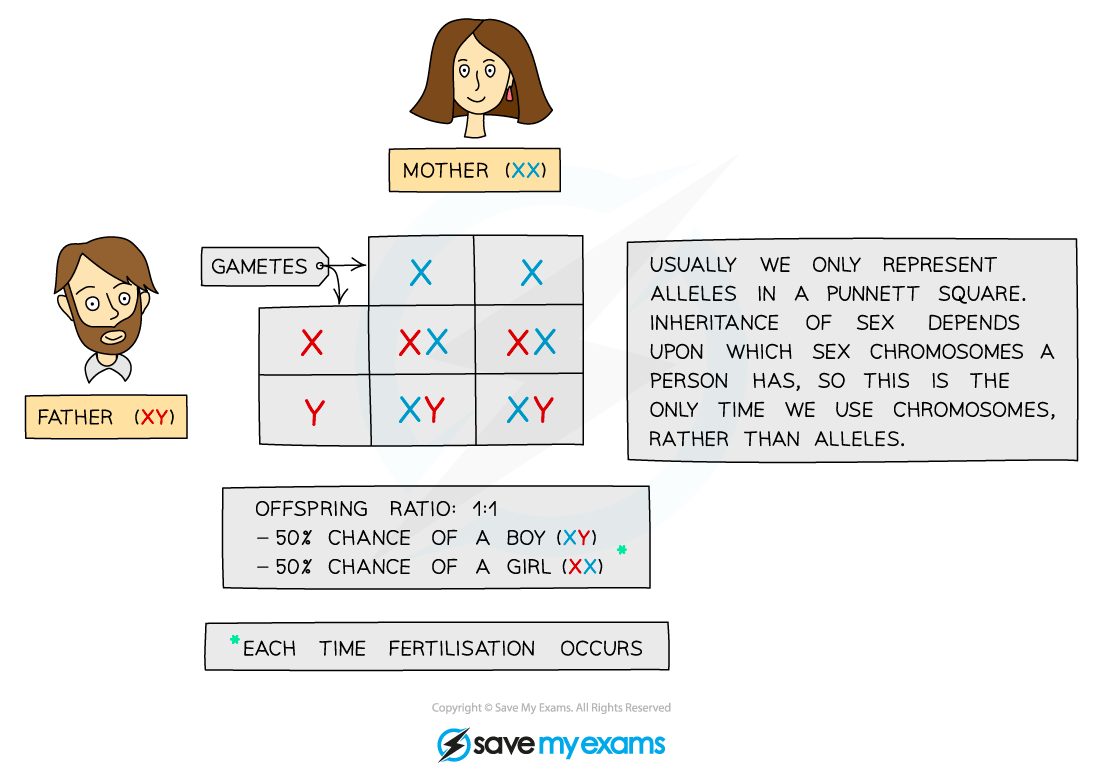- 翰林提供学术活动、国际课程、科研项目一站式留学背景提升服务!
- 400 888 0080
IB DP Biology: SL复习笔记3.1.8 Sex Determination
Sex Determination
- Sex is determined by an entire chromosome pair (as opposed to most other characteristics that are just determined by one or a number of genes)
- Females have the sex chromosomes (pair 23 in humans) XX
- Males have the sex chromosomes (pair 23 in humans) XY
- Note that the rule XX for females and XY for males applies to mammals, but not to all species
- All other chromosomes (pairs 1 - 22 in humans) are autosomes and have no influence on determining the sex of offspring
- Because only a father can pass on a Y chromosome, he is responsible for determining the sex of the child
- Due to meiosis, half of his sperm cells will carry his X chromosome, half his Y chromosome
- The chromosome carried by the sperm that fertilizes the egg will determine the sex of the child
- His daughters receive a copy of his X chromosome
- His sons receive a copy of his Y chromosome

Sperm cells determine the sex of offspring
- The inheritance of sex can be shown using a genetic diagram (known as a Punnett square), with the X and Y chromosomes taking the place of the alleles usually written in the boxes

Punnett square showing the inheritance of sex
Genes carried by X and Y chromosomes
- The X chromosome is larger than the Y, and has its centromere more central than on the Y chromosome
- Fewer genes are coded for on the Y chromosome as a result
- The X carries around 16 × more genes than the Y chromosome
- Non-sex phenotypic traits, including certain blood clotting factors, are coded for on the X chromosome but not on the Y
- Fewer genes are coded for on the Y chromosome as a result
- The Y chromosome carries genes that code for male characteristics
- One of these genes is the SRY gene which is involved in
- Development of testes in male embryos
- Production of testosterone
- Females don't receive these genes, so instead, ovaries develop and female sex hormones are expressed
转载自savemyexams

最新发布
© 2025. All Rights Reserved. 沪ICP备2023009024号-1









